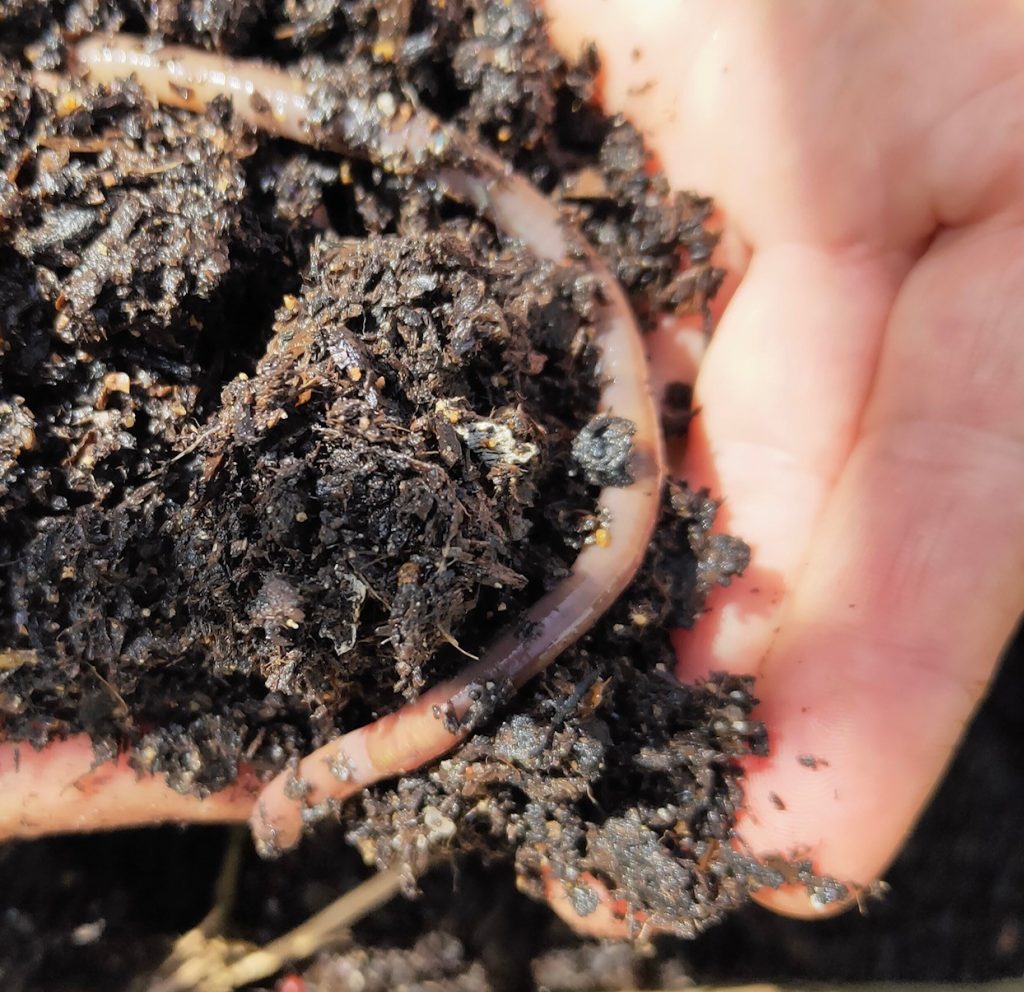Dirt is Dead, Soil is Alive With Biology
Loss of soil cover, soil carbon, and the degradation of soil health has turned millions of hectares of agricultural lands into dirt and greatly reduced the ability to sustainably grow food on agricultural lands.
Reduced cover and bare ground impact soil temperature by up to 50°C and these temperature changes kill soil biology, disrupt the small water cycle, shift rain patterns, increase evaporation, cause more severe storms, droughts and ultimately determines how and where food can be grown.
Rebuilding these “dirt lands”.. or should I say “hurt lands”, can be done, but it takes careful attention, management, understanding, and harnessing the power of photosynthesis, and enhancing natural plant/microbe relationships.

The Power of Photosynthesis
Plants are the most efficient solar panels on earth. They absorb carbon dioxide during photosynthesis and convert it, with the addition of macro and micronutrients into carbohydrates, lipids, and amino acids, etc, which they use to grow leaves, stems fruits/seeds (30 – 40%), roots (30%), and around 40% apportioned to root exudates (secretions of carbohydrates, acids, lipids, amino acids
You may have heard quoted by Kiss the Ground that a teaspoon of soil can hold more biology than people on the planet, but that number varies exponentially from dirt to soil. The quality and quantity of microbiology are critical to soil health.
It’s also been recently discovered that plants and microbes signal each other in a mutually beneficial nutrient exchange. Soil biology supplies essential nutrients as needed for the plant, and the plant supplies food to the soil biome. If the biology needs extra food to establish a community in degraded soil, the plant can divert extra exudate supply to feed the soil biology. A plant can designate up to 80% of the total energy produced in photosynthesis, to exudates to feed soil biology.
Not All Carbon is Equal
Soil organic carbon can be broken into separate pools: labile carbon, resistant residues, and stable soil organic matter.
Labile carbon is a fraction of the main component of soil organic matter but is essential to produce food without the addition of GHG emissions heavy synthetic fertilisers. It offers food and security to the crucial biology in soil. It also enables the building of further soil carbon as higher plant biomass, both above and below ground, can be grown on lower inputs. That greater biomass means supplying increased plant matter to produce even more soil organic carbon and nutritious food.
In soils where labile carbon (a major food source for microbes) is low, extra plant energy is apportioned to feed the surrounding soil microbes and fungi, taking energy that would otherwise have been put into growing plant biomass.
Rebuilding The Soil Sponge
Walter Jehne has outlined one of the most positive regeneration pathways with his explanation of the soil carbon sponge, the impact achieved with increasing growing plants by just a small percentage and the effect that can have on cooling the planet and repairing our small water cycle.
Our certified farmers increase both labile carbon – to excite and increase carbon cycling; and stable carbon – to act as “bedsprings” within the soil, improving its soil spaces, air, and water infiltration. One part of carbon will hold four times its volume in water, so this also assists in maintaining the moisture levels necessary for soil biology to persist and plants to grow.
Stable carbon can remain stored in the soil for thousands of years, but active or labile carbon is quickly released into the atmosphere by current farming methods such as plowing or tillage (a means of mechanically agitating the soil.) The loss of active or labile carbon leads to dead soil. Our certified farmers build soils with increased amounts of labile carbon, where microbe to plant relationships can flourish, and the photosynthetic energy can be focused on producing healthy, nutritious food, and helping to create more stable weather patterns, while resilient enough to weather the current extremes.
Regenerative Practises
Minimum tillage practices by our farmers stop this soil disruption and increase levels of soil organic matter, and labile carbon, meaning healthier and more resilient soil, growing more biomass and food.
Crop Rotations are essential because if the same crop is grown in the same field year after year, nutrients become depleted and biology becomes less diverse – rotating crops prevent this and helps replenish soil nutrients.
Cover Crops are another way our farmers assist the soil. These crops don’t simply cover the soil rather than leaving it bare but are also grown to have a particular function, be it to gather nutrients, to have an impact on removing compaction or providing diverse habitats for beneficial insect species, they also protect the soil from erosion or being washed away.
Microbial Inoculation is an important management adoption, as it helps to quickly rebuild the diversity that has been lost through common practice, conventional synthetic fertiliser, and high residue chemical use. These inoculations provide a kick start to the plant/soil biology relationships that assist them on the way to growing food with low or no inputs. Composts, compost extracts and teas, fungal inoculants, Biological seed dressings, Johnson-Su bioreactors, Korean Natural Farming amendments, vermicasts, and biodynamic preparations, are all recognised to assist with re-establishing that plant/biology relationship.
Ground Cover is maintained and is managed (without fire) to break down into the soil (increasing labile carbon) improving plant/biology communities to cycle nutrients.
Reducing Synthetic Inputs benefits both the establishment of healthy soil biology, residue reduction, and limiting Greenhouse gas emissions.
Livestock integration adds another layer of diversity, to both the above-ground and below-ground biology. Their utilisation of “waste” crop residues as well as the inoculation of the paddocks with their biology-laden manure and saliva, and the attraction of insects that actively burrow and transfer above ground nutrients back below the ground, improve both the soil structure and fertility when managed holistically.
Climate Friendly Food
Adopting these regenerative farming methods has a dramatic effect on land-use emissions. The University of Queensland recently built a Green House Gas (GHG) to measure our farmers’ emissions. It showed that ASP Farmers had an 80% reduction in GHG emissions from wheat production, compared to the averages from 11 peer-reviewed papers on Australian Wheat production. Further calculators for other grain commodities such as barley, and sorghum have had similar outcomes.
The Rodale Institute recently published a white paper stating that their organic farming systems release 40% fewer CO2 equivalent emissions than conventional practices.
Environmentally Responsible
Improving overall soil health also means that further clearing of forests is not necessary. Our farmers work to regenerate degraded soils, bringing them back to life and optimum performance.
The holistic approach taken by ASP Certified farmers improve the natural resources they depend on, rather than destroying or depleting them, and they do this while profitably growing food, enabling the building of stronger regional communities leaving them much more resilient to the extremes in weather that are becoming so common, and crucially important, rebuilding soils. They aim to close the loop on fertility inputs and many brew their own biological amendments.
Restoring soil can’t be the only focus though, because “To be green, you need to stay in the black” which is why our certification also monitors financial and social outcomes and making decisions that have a positive influence on all three.
Circular Economy
Supporting farmers that produce your food this way, is taking part in circularity, giving you the opportunity to participate through consumption in the positive environmental, social, and economic future for our country, supporting family farmers to regenerate their land, regenerating communities, and the prosperity of our country.
If you want to do more than just slow down climate change by reducing emissions, then be sure to look for the logo that shows that the food grown by land stewards, is actively regenerating soils, reversing climate issues, and providing a positive, healthy, stable future for all.
REFERENCES
Labile Carbon By Fran Hoyle1 , Dan Murphy2 and Jessica Sheppard3 1Department of Agriculture and Food Western Australia, 2 The University of Western Australia, 3Avon Catchment Council
Christine Jones, PhD Founder, Amazing Carbon www.amazingcarbon.com https://amazingcarbon.com/JONES-LightFarmingFINAL(2018).pdf
Regenerate Earth, Walter Jehne
http://nzbiocharltd.co.nz/resources/Regenerate-Earth-Paper-Walter-Jehne%20%281%29.pdf
Eisenhauer, N., Lanoue, A., Strecker, T. et al. Root biomass and exudates link plant diversity with soil bacterial and fungal biomass. Sci Rep 7, 44641 (2017).
Carbon Wheat Crop Calculator I Rodrigo, P Dargusch Earth Science Division, University of Qld. July 2020
Rodale Soil Carbon white Paper v11 AUTHORED BY: Jeff Moyer, Andrew Smith, PhD, Yichao Rui, PhD, Jennifer Hayden, PhD September 2020
Home
[mk_title_box font_family=”none”]Dirt = Hurt and Soil = Soul[/mk_title_box]
